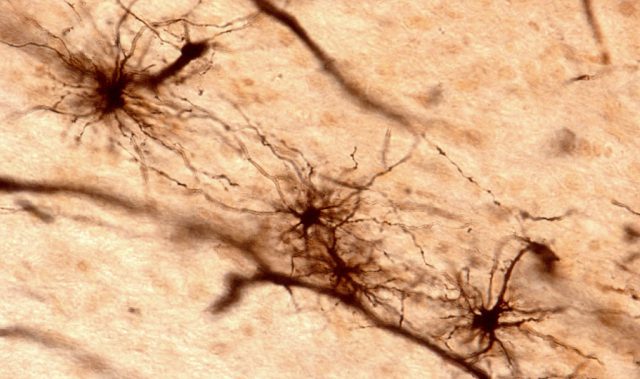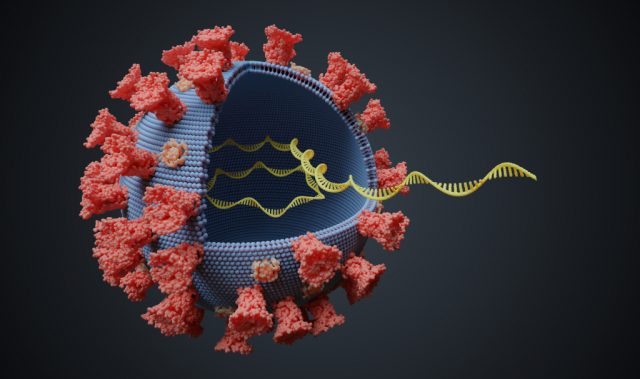
AsianScientist (Sep. 29, 2015) – Neurons interact with each other via the release of neurotransmitter molecules but until recently, the actual process had never been observed. A new method of observing the release and mixing of materials between neuronal cell vesicles has been developed by researchers based in Korea. Their work has been published in the Journal of the American Chemical Society.
The specific type of cellular structure they focused on, called vesicles, act as a vehicle for transporting and organizing materials within the cell. Each vesicle is like a tiny, waterproof container that protects the contents inside of it and keeps its contents separate from the rest of the cell.
When the vesicles need to move material among themselves, to another organelle or out of the cell, they do it via a process called vesicle fusion. During the fusion process, the membranes of the vesicles and the other fusing membrane attach and a small, secure opening forms that allows material to move between them (imagine the way a space shuttle makes a seal when it docks to a space station).
To make this seal, tendril-like fingers called SNAREs (Soluble N-ethylmaleimide factor Attachment protein REceptors) on each vesicle find and pull on each other as they get close to form a tight, intertwining bond. Once this bond is formed, the fusion opening forms between vesicles and the cargo they carry can mix.
Until recently, only the result of this fusion mixing—never the process itself—had been observed.
“Our assay with high sensitivity allows an efficient detection of SNARE-mediated vesicle fusion pore dynamics which have not been observed in previous in vitro assays,” explained the first author of the paper Ms. Gong Bokyoung, a graduate student at Pohang University of Science and Technology (POSTECH).
During experiments, the team discovered that as many as three open-close cycles (called flickering) happened during the fusion process. The opening dilated and constricted during vesicle fusion before the cargo was fully mixed.
To observe this, the team used two different molecules—one shaped like a hollow pumpkin called cucurbit[7]uril (CB[7]) and the other a small ball which fits inside of it called adamantane (Ad)—known as a host-guest pair, that have a high affinity for each other and combining together. The team made these molecules each with one half of complementary set of fluorescent dyes which give off one color when separated and another when combined.
Each dye-conjugated molecule was isolated in separate vesicles which were then allowed to go through the fusion process where the contents of each vesicle could combine. Using this method the team was able to see how the vesicles behaved by observing the color emitted in each of the individual vesicles before fusion took place and then again when the molecules combined.
No actual neurotransmitter was mixed during this process, as CB[7]-Ad host-guest pairs were used in its place. They serve as an easily observable model for how neurotransmitter and other cargo are mixed between vesicles.
The observation of the vesicle fusion mechanism was an important achievement for the IBS team. Perhaps even more important is the method which they devised to make the observations. The CB[7]-Ad host-guest pairs can be used again in the future for the observation of more than just vesicle fusion.
“Such applications should enhance our ability to study short-lived events in biologically complex processes,” said Professor Kim Kimoon, corresponding author of the paper and director for Center for Self-Assembly and Complexity at POSTECH.
Because of the development of this new process, scientists may be able able to make observations that were previously impossible until now.
Kim added, “The power of these probes is demonstrated by the first successful observation of flickering dynamics of the fusion pore by in vitro assay using neuronal SNARE-reconstituted vesicles.”
The article can be found at: Gong et al. (2015) High Affinity Host–Guest FRET Pair for Single-Vesicle Content-Mixing Assay: Observation of Flickering Fusion Events.
———
Source: Institute for Basic Science.
Disclaimer: This article does not necessarily reflect the views of AsianScientist or its staff.












